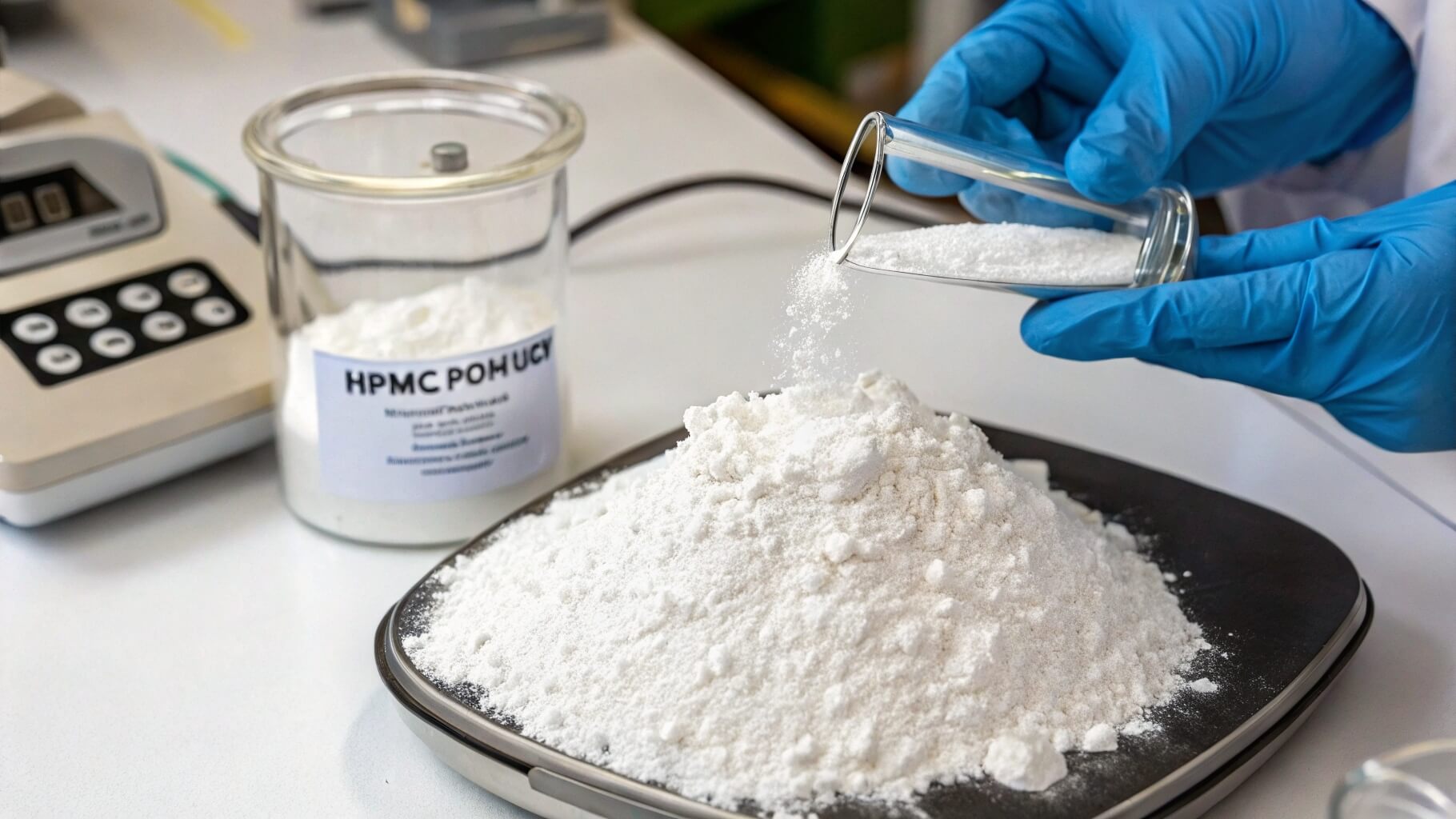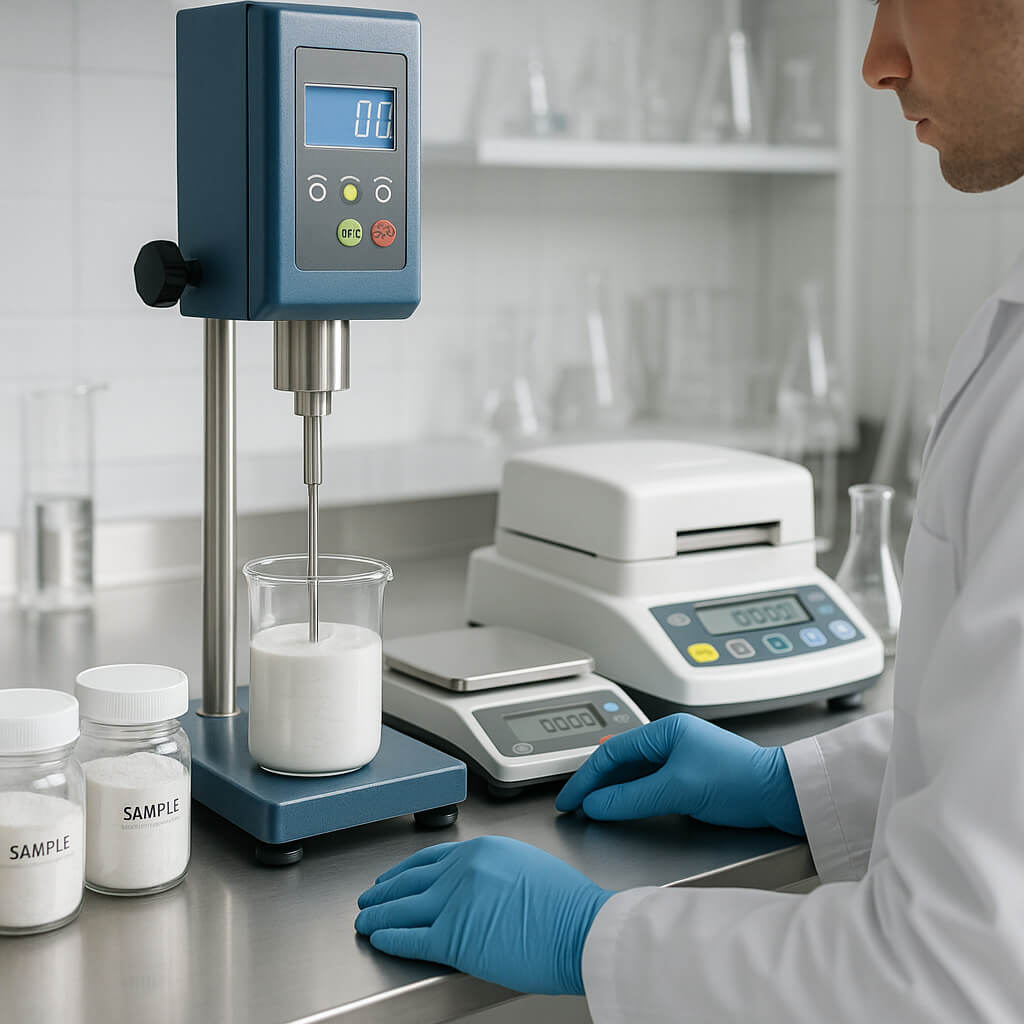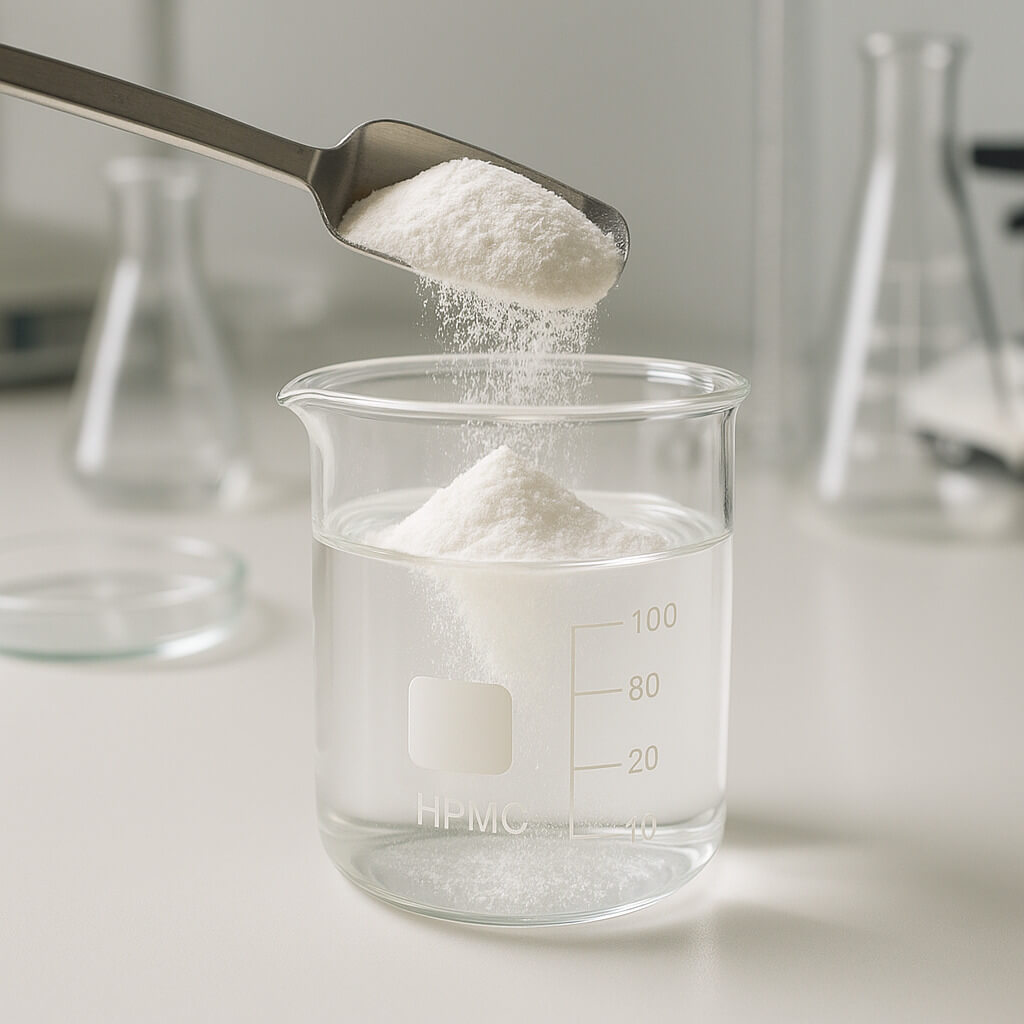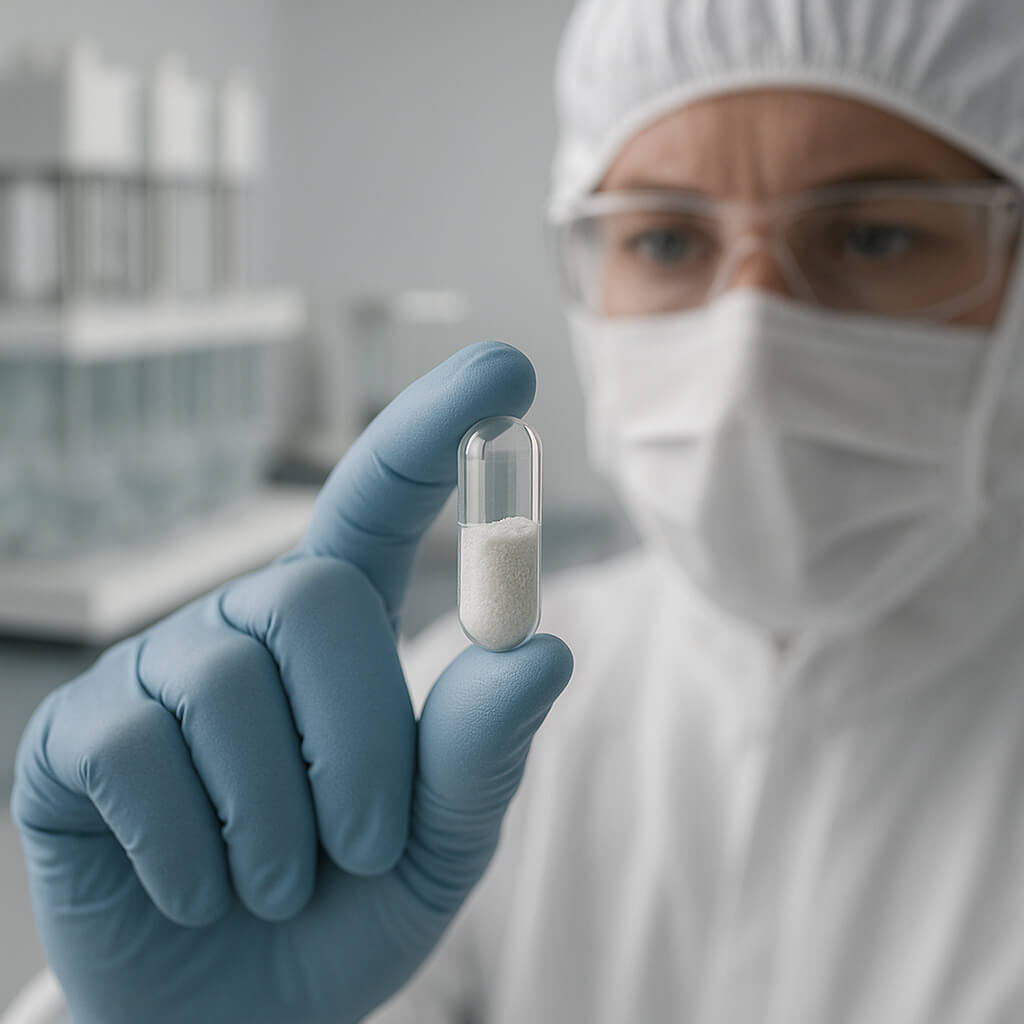Sourcing Hydroxypropyl Methylcellulose (HPMC) can be challenging, especially when balancing quality, price, and supply stability. Inconsistent viscosity, contamination, and unreliable suppliers can lead to costly disruptions. But does China’s dominance in HPMC manufacturing translate to reliable quality?
Chinese HPMC manufacturers follow strict quality control measures, international certification standards, and advanced production techniques to ensure consistency and reliability. With a well-established supply chain, China remains a major player in the global HPMC market.

A laboratory technician testing the viscosity and purity of HPMC to ensure compliance with international standards.
China’s role in the global HPMC market cannot be ignored. But what makes its manufacturers competitive, and how do they ensure quality? Let’s explore the key factors driving China’s HPMC industry.
What Makes HPMC from China a Key Player in the Global Market?
As global demand for Hydroxypropyl Methylcellulose (HPMC) grows, China has emerged as a dominant supplier. But what factors position Chinese manufacturers as key players in the international market?
China leads the global HPMC market due to its large-scale production capacity, cost-efficient manufacturing, advanced technology, and strong export infrastructure. These advantages allow Chinese suppliers to meet international demand while maintaining competitive pricing.
Key Factors Driving China’s HPMC Dominance
1. High Production Capacity & Economies of Scale
- China has some of the largest HPMC production facilities in the world.
- Large-scale manufacturing enables cost reduction and bulk supply stability.
- Economies of scale allow for competitive pricing without compromising quality.
2. Cost-Effective Manufacturing
- Abundant raw materials (cellulose sources) reduce production costs.
- Lower labor and operational expenses compared to Western manufacturers.
- Government support and industrial incentives enhance cost efficiency.
3. Advanced Manufacturing Technology
- Adoption of automated production lines ensures batch-to-batch consistency.
- High-precision filtration and drying techniques maintain HPMC purity.
- Investment in R&D and quality control systems improves product performance.
4. Strong Export Infrastructure
- China has a well-established logistics network for global distribution.
- Major ports such as Shanghai, Ningbo, and Qingdao enable efficient international shipping.
- Reliable customs processing and export documentation reduce shipping delays.
5. Compliance with International Standards
- Leading manufacturers adhere to USP, EP, JP, and REACH regulations.
- Strict quality testing ensures compliance with global construction, pharmaceutical, and food safety standards.
- Continuous improvements in environmental sustainability and production safety reinforce China’s role in the global market.
China’s HPMC vs. Other Leading Producers
| Country | Strengths | Weaknesses |
|---|---|---|
| China | Cost-effective, high production capacity, strong export network, global certifications | Some lower-tier suppliers may lack consistency |
| Germany | High-purity production, advanced R&D | Higher costs, lower output |
| India | Growing production, emerging supplier | Quality inconsistencies, supply chain inefficiencies |
| USA | Strict regulatory standards, premium-grade HPMC | Expensive, limited export volume |
China’s dominance in the HPMC industry is backed by cost efficiency, manufacturing scale, and export capability, making it the preferred choice for global buyers. But how do Chinese manufacturers ensure consistent quality? Let’s examine their quality control practices.
How Do Chinese HPMC Manufacturers Maintain Quality Standards?
Consistency and quality are critical when sourcing Hydroxypropyl Methylcellulose (HPMC). Given China’s large-scale production, how do manufacturers ensure that each batch meets industry standards?
Chinese HPMC manufacturers maintain quality through strict raw material selection, advanced production processes, international certifications, and rigorous testing procedures. These measures guarantee consistency in viscosity, purity, and performance.
Key Quality Control Measures in Chinese HPMC Production
1. Strict Raw Material Selection
- High-purity cellulose sourced from trusted suppliers.
- Pre-production material screening to eliminate impurities.
- Chemical modification precision to achieve the required properties.
2. Advanced Manufacturing Processes
- Automated reaction control ensures uniform product consistency.
- High-precision filtration and drying techniques remove unwanted residues.
- Consistent particle size control prevents formulation issues.
3. Compliance with International Standards
- Leading manufacturers comply with USP, EP, JP, and REACH regulations.
- Regular third-party audits verify production consistency.
- Certifications improve global market access and product reliability.
4. Rigorous Testing & Quality Assurance
- Viscosity and moisture content testing ensure stability.
- pH and substitution degree analysis confirm chemical integrity.
- Batch-to-batch testing eliminates inconsistencies.
| Quality Control Measure | Purpose |
|---|---|
| Raw Material Testing | Ensures purity and cellulose quality. |
| Process Automation | Reduces human error and improves batch consistency. |
| Third-Party Certifications | Verifies compliance with global standards. |
| Final Product Testing | Confirms viscosity, purity, and performance. |
Customization & Quality Assurance
- Leading suppliers offer customized HPMC formulations to meet specific industrial needs.
- Adjustments in viscosity, dissolution rate, and particle size enhance performance in construction, pharmaceuticals, and food applications.
Chinese manufacturers ensure a balance between high production volume and stringent quality control, making them a trusted source for global buyers. But are all Chinese HPMC manufacturers consistent in quality, or do variations exist? Let’s analyze the differences among suppliers.
Are There Variations in HPMC Quality Among Chinese Manufacturers?
China dominates Hydroxypropyl Methylcellulose (HPMC) production, but not all suppliers offer the same level of quality. While some manufacturers adhere to strict international standards, others may cut corners, leading to inconsistencies in viscosity, purity, and performance.
HPMC quality varies among Chinese manufacturers due to differences in raw material sourcing, production technology, quality control protocols, and adherence to international certifications. Buyers must carefully evaluate suppliers to ensure consistent product quality.
Key Factors Causing Quality Variations
1. Raw Material Sourcing
- High-end manufacturers source high-purity cellulose from trusted suppliers.
- Lower-tier producers may use lower-grade raw materials, leading to contamination risks.
- Inconsistent raw material sourcing can result in batch-to-batch variation.
2. Manufacturing Technology & Process Control
- Advanced facilities use automated production lines for precise chemical modification.
- Smaller factories often rely on manual processes, increasing variability.
- Poor filtration and drying techniques can lead to impurities in the final product.
3. Quality Control & Testing Standards
- Reputable suppliers conduct batch consistency testing, ensuring uniform viscosity and purity.
- Some manufacturers lack strict testing protocols, leading to quality fluctuations.
- Third-party lab certifications can help verify product consistency.
4. Compliance with International Standards
- Top-tier manufacturers comply with USP, EP, JP, and REACH regulations.
- Some suppliers only meet local standards, which may not align with global requirements.
- Buyers should request COA (Certificate of Analysis) and independent lab reports to verify compliance.
Comparing Different Tiers of Chinese HPMC Suppliers
| Supplier Type | Strengths | Weaknesses |
|---|---|---|
| Top-Tier Manufacturers | High-purity raw materials, advanced technology, global certifications, consistent batch quality | Higher pricing due to strict quality control |
| Mid-Level Suppliers | Competitive pricing, moderate quality control, meets general industry standards | Occasional batch inconsistencies, limited R&D investment |
| Lower-Tier Producers | Cheapest pricing, flexible production | High risk of impurities, poor consistency, lack of certifications |
How to Avoid Low-Quality HPMC
- Request third-party lab test reports before making bulk purchases.
- Verify production certifications (USP, EP, JP, REACH) to ensure compliance.
- Conduct supplier audits or request video inspections of manufacturing facilities.
- Start with small trial orders to assess batch consistency before scaling up.
While many Chinese manufacturers offer reliable, high-quality HPMC, buyers must carefully assess suppliers to avoid quality risks. But beyond quality variations, how is Chinese HPMC used across different industries? Let’s explore its key applications.
What Are the Applications of Chinese HPMC in Different Industries?
Hydroxypropyl Methylcellulose (HPMC) is a versatile additive with applications across multiple industries. While construction remains the largest consumer, Chinese HPMC is also widely used in pharmaceuticals, food production, cosmetics, and coatings due to its stabilizing, thickening, and binding properties.
Chinese HPMC is used in construction, pharmaceuticals, food production, personal care, and industrial coatings. Its ability to enhance viscosity, improve stability, and act as a binding agent makes it essential for various applications.
Key Industries Using Chinese HPMC
1. Construction Industry
- Tile Adhesives & Mortars: Improves adhesion, water retention, and workability.
- Plasters & Renders: Enhances spreadability and crack resistance.
- Self-Leveling Compounds: Regulates flow properties and drying time.
- Gypsum-Based Products: Prevents shrinkage and increases strength.
2. Pharmaceutical Industry
- Tablet Coatings: Provides film-forming properties for controlled drug release.
- Capsules & Binders: Acts as a disintegration and binding agent in tablets.
- Ophthalmic Solutions: Functions as a viscosity enhancer in eye drops.
- Sustained Release Formulations: Controls drug dissolution rates.
3. Food Industry
- Dairy Products: Stabilizes yogurt, ice cream, and plant-based milks.
- Bakery & Dough Conditioners: Improves moisture retention and texture.
- Gluten-Free Products: Provides structural integrity in flour substitutes.
- Sauces & Dressings: Enhances emulsification and prevents separation.
4. Cosmetics & Personal Care
- Shampoos & Conditioners: Enhances thickness and foaming stability.
- Lotions & Creams: Acts as a film-forming and moisturizing agent.
- Toothpaste: Improves texture and stability.
- Facial Masks: Provides hydration and skin adhesion.
5. Industrial Coatings & Paints
- Water-Based Paints: Regulates viscosity and improves application smoothness.
- Printing Inks: Enhances flow properties and adhesion.
- Adhesives & Sealants: Improves bonding strength and durability.
Industry-Specific HPMC Properties
| Industry | Key HPMC Functions |
|---|---|
| Construction | Water retention, adhesion, crack resistance |
| Pharmaceuticals | Tablet binding, controlled release, viscosity control |
| Food | Emulsification, thickening, moisture retention |
| Cosmetics | Film-forming, stabilizing, texture enhancement |
| Industrial Coatings | Viscosity regulation, adhesion improvement |
Chinese HPMC manufacturers produce customized formulations tailored for industry-specific applications, ensuring high performance and compliance with regulatory standards. But beyond its applications, what are the pricing trends and market factors influencing the cost of Chinese HPMC? Let’s take a closer look.
What Are the Pricing Trends and Market Factors for Chinese HPMC?
The price of Hydroxypropyl Methylcellulose (HPMC) fluctuates due to various market dynamics. While China remains the most cost-effective producer, factors like raw material costs, supply chain stability, and global demand influence pricing trends.
HPMC pricing is affected by raw material availability, production costs, supply chain efficiency, and global demand. Buyers must track these factors to secure stable pricing and avoid unexpected cost spikes.
Key Factors Influencing HPMC Pricing
1. Raw Material Costs
- HPMC is derived from cellulose, mainly sourced from wood pulp and cotton linters.
- Fluctuations in global cellulose prices directly impact HPMC costs.
- Environmental policies affecting forestry and paper industries influence supply.
2. Production Costs & Energy Prices
- HPMC manufacturing requires chemical modification processes, which depend on energy-intensive operations.
- Rising electricity and fuel costs can drive up production expenses.
- Factories with efficient automation and process optimization offer more stable pricing.
3. Supply Chain & Logistics
- Shipping rates and container availability impact the final cost of HPMC exports.
- Port congestion, customs delays, and global trade restrictions affect delivery times.
- Manufacturers with strong export networks provide more predictable lead times and cost stability.
4. Global Demand & Market Competition
- Construction and pharmaceutical industries drive consistent demand for HPMC.
- Emerging markets in India, Southeast Asia, and South America increase competition for supply.
- Seasonal fluctuations affect demand, particularly in construction.
5. Government Regulations & Trade Policies
- Tariffs, import duties, and export restrictions influence costs.
- Compliance with USP, EP, JP, and REACH standards affects production complexity.
- Chinese government subsidies for chemical manufacturing impact pricing competitiveness.
Recent Pricing Trends in the Chinese HPMC Market
| Year | Average Price (USD/ton) | Key Influencing Factors |
|---|---|---|
| 2021 | $2,500 – $3,200 | High demand post-pandemic recovery |
| 2022 | $2,800 – $3,500 | Rising raw material and energy costs |
| 2023 | $2,700 – $3,300 | Stabilization after supply chain adjustments |
| 2024 (Projected) | $2,900 – $3,400 | Increased production efficiency, moderate demand growth |
Strategies for Buyers to Secure Stable Pricing
- Establish long-term contracts with suppliers to lock in favorable rates.
- Monitor cellulose and energy market trends to anticipate cost fluctuations.
- Source from multiple suppliers to mitigate risks associated with price surges.
- Negotiate bulk purchase discounts for consistent long-term orders.
Understanding pricing trends and market dynamics helps buyers make informed sourcing decisions. But with so many manufacturers in China, how can businesses ensure they partner with a reliable supplier? Let’s explore the best selection criteria.
How to Choose a Reliable HPMC Manufacturer in China?
With numerous Hydroxypropyl Methylcellulose (HPMC) manufacturers in China, selecting the right supplier is critical to ensuring consistent quality, reliable delivery, and compliance with international standards. But how can buyers differentiate between trustworthy suppliers and unreliable ones?
To choose a reliable Chinese HPMC manufacturer, buyers should evaluate certifications, production capacity, quality control processes, pricing transparency, and logistics capabilities. Conducting factory audits, requesting sample testing, and verifying compliance with global regulations are essential steps.
Key Factors to Consider When Selecting an HPMC Supplier
1. Certifications & Regulatory Compliance
- USP, EP, JP, and REACH certifications confirm adherence to international standards.
- ISO 9001 certification ensures a structured quality management system.
- Third-party COA (Certificate of Analysis) and MSDS (Material Safety Data Sheets) verify product consistency.
2. Manufacturing Capacity & Technological Capabilities
- Large-scale manufacturers use automated production lines for batch consistency.
- Advanced filtration and drying technologies prevent contamination.
- A strong R&D team ensures innovation and customized formulations.
3. Quality Control & Testing Protocols
- Batch-to-batch viscosity testing guarantees uniform performance.
- pH and moisture content analysis prevents chemical instability.
- Suppliers should provide third-party lab test reports upon request.
4. Pricing Transparency & Cost Structure
- Avoid suppliers with hidden costs related to packaging, documentation, or export fees.
- Compare pricing based on HPMC grade, viscosity levels, and purity.
- Long-term contracts can stabilize pricing and secure better terms.
5. Supply Chain & Logistics Reliability
- Established suppliers have strong export networks for faster shipping.
- Proximity to major ports (Shanghai, Ningbo, Qingdao) ensures efficient global distribution.
- Suppliers with experience in customs documentation minimize delays.
Supplier Evaluation Checklist
| Criteria | Why It’s Important |
|---|---|
| Certifications & Compliance | Ensures global regulatory acceptance. |
| Production Capacity | Reduces supply disruptions and ensures scalability. |
| Batch Consistency | Prevents formulation failures and material defects. |
| Transparent Pricing | Eliminates unexpected costs and improves budgeting. |
| Export & Logistics Expertise | Facilitates smooth international shipments. |
Red Flags to Watch Out For
- Lack of verifiable certifications – Could indicate weak quality control.
- Unrealistically low prices – May reflect inferior raw materials or process shortcuts.
- Inconsistent communication – Delayed responses may signal operational inefficiencies.
- No sample availability – Reputable suppliers should offer test samples before bulk orders.
Choosing the right HPMC manufacturer is essential for maintaining product performance and supply chain stability. But is Chinese HPMC ultimately a reliable choice for international buyers? Let’s summarize the key insights.
Final Thoughts: Is Chinese HPMC a Reliable Choice for Your Business?
For businesses seeking Hydroxypropyl Methylcellulose (HPMC), China remains a dominant global supplier. But is sourcing from Chinese manufacturers truly a reliable option?
Chinese HPMC manufacturers provide cost-effective, high-quality, and globally certified products, making them a dependable choice for buyers in construction, pharmaceuticals, food, and industrial applications. However, supplier selection is key to ensuring consistent quality and long-term reliability.
Why Chinese HPMC is a Strong Option for Buyers
- Cost Efficiency – Large-scale production lowers manufacturing costs.
- Global Certifications – Many suppliers meet USP, EP, JP, and REACH standards.
- High Production Capacity – Ensures consistent supply and scalability.
- Technological Advancements – Automated processes improve product uniformity.
- Export Readiness – Well-established logistics support global shipping.
Key Considerations Before Choosing a Supplier
- Verify certifications and lab reports to confirm compliance with international standards.
- Conduct supplier audits or request production facility inspections.
- Start with sample orders to test batch consistency before committing to bulk purchases.
- Assess pricing structures to avoid hidden costs or supply chain risks.
For businesses looking for a reliable HPMC supplier, working with verified and experienced manufacturers in China ensures stable quality, efficient procurement, and competitive pricing. To discuss your specific HPMC needs, reach out to industry experts today.
FAQ
Who is the supplier of HPMC in China?
China has numerous Hydroxypropyl Methylcellulose (HPMC) suppliers, ranging from large-scale manufacturers to specialized trading companies. Leading suppliers typically hold USP, EP, JP, and REACH certifications and export globally. Buyers should evaluate suppliers based on quality control, production capacity, and export experience to ensure consistency.
Is HPMC FDA approved?
HPMC is considered Generally Recognized as Safe (GRAS) by the U.S. Food and Drug Administration (FDA) for specific applications, particularly in pharmaceutical and food industries. However, manufacturers must ensure compliance with FDA regulations and Good Manufacturing Practices (GMP) for their specific formulations.
What are the different grades of HPMC?
HPMC is available in multiple grades, depending on its viscosity, substitution level, and intended use:
| HPMC Grade | Application |
|---|---|
| Construction Grade | Tile adhesives, mortar, plaster, self-leveling compounds |
| Pharmaceutical Grade | Tablet coatings, capsules, controlled drug release |
| Food Grade | Dairy products, gluten-free foods, sauces, bakery items |
| Cosmetic & Personal Care Grade | Shampoos, lotions, creams, toothpaste |
| Industrial Grade | Paints, coatings, adhesives |
Each grade has specific viscosity levels and functional properties, making selection crucial based on end-use requirements.
Which is better, CMC or HPMC?
The choice between Carboxymethyl Cellulose (CMC) and Hydroxypropyl Methylcellulose (HPMC) depends on application needs:
| Property | HPMC | CMC |
|---|---|---|
| Water Retention | High | Moderate |
| Adhesion | Stronger | Weaker |
| Thickening Effect | Moderate | Higher |
| Film-Forming Ability | Excellent | Limited |
| Applications | Construction, pharma, food, coatings | Food, detergents, paper, textiles |
HPMC is preferred in construction, pharmaceuticals, and coatings due to its film-forming properties and enhanced stability, whereas CMC is commonly used in food, detergents, and paper applications.




